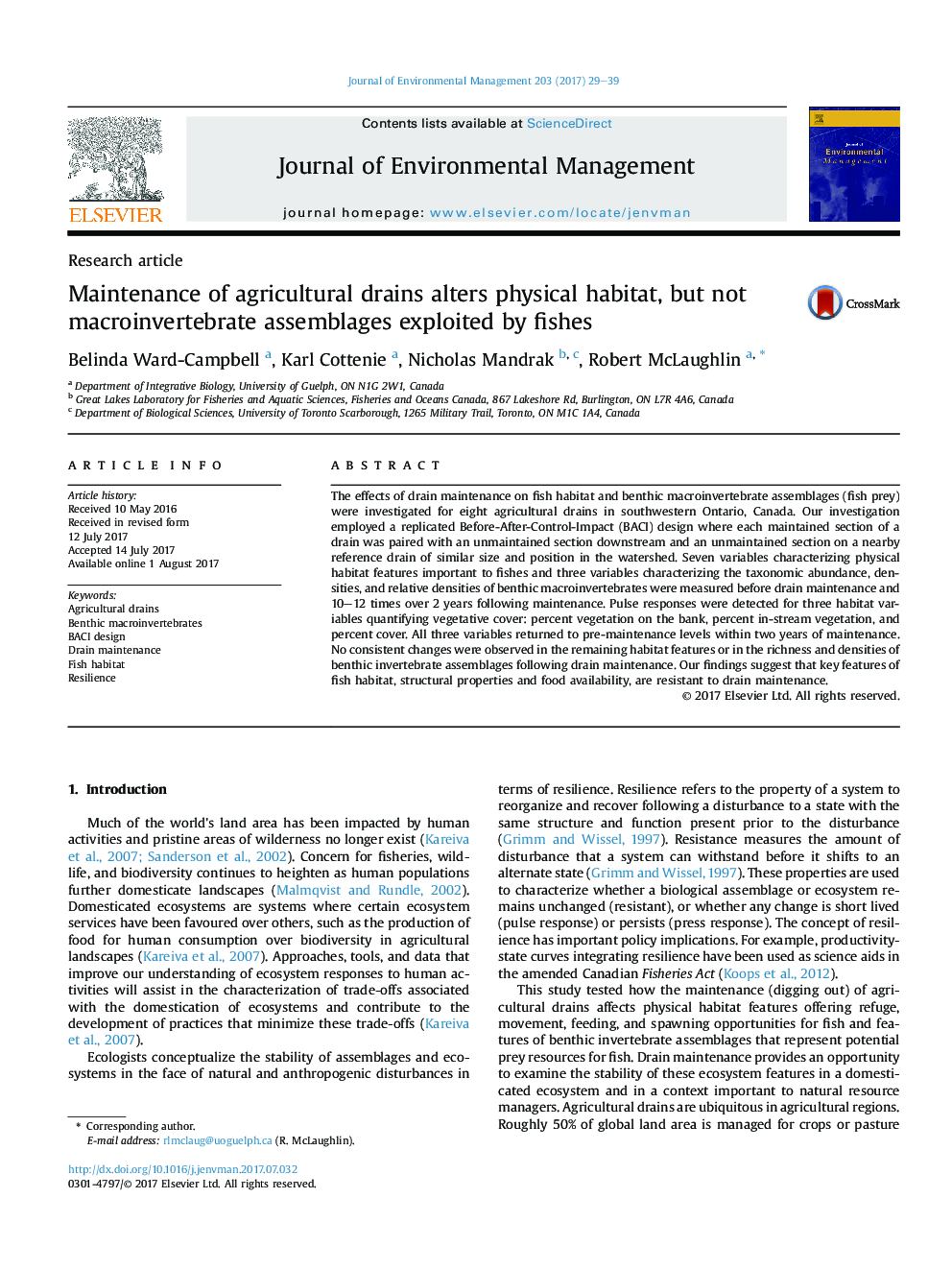| Article ID | Journal | Published Year | Pages | File Type |
|---|---|---|---|---|
| 5116488 | Journal of Environmental Management | 2017 | 11 Pages |
â¢Drain maintenance has caused tension between fish habitat managers and the agricultural community.â¢Habitat features important to fishes were tracked for two years after drain maintenance.â¢The habitat features either did not change or returned to pre-maintenance state within two years.â¢Our findings should ease the tensions and help manage drains for the needs of fishes and agriculture.
The effects of drain maintenance on fish habitat and benthic macroinvertebrate assemblages (fish prey) were investigated for eight agricultural drains in southwestern Ontario, Canada. Our investigation employed a replicated Before-After-Control-Impact (BACI) design where each maintained section of a drain was paired with an unmaintained section downstream and an unmaintained section on a nearby reference drain of similar size and position in the watershed. Seven variables characterizing physical habitat features important to fishes and three variables characterizing the taxonomic abundance, densities, and relative densities of benthic macroinvertebrates were measured before drain maintenance and 10-12 times over 2 years following maintenance. Pulse responses were detected for three habitat variables quantifying vegetative cover: percent vegetation on the bank, percent in-stream vegetation, and percent cover. All three variables returned to pre-maintenance levels within two years of maintenance. No consistent changes were observed in the remaining habitat features or in the richness and densities of benthic invertebrate assemblages following drain maintenance. Our findings suggest that key features of fish habitat, structural properties and food availability, are resistant to drain maintenance.
